A Little TLC For Our Smiles!
No doubt about it, our smiles are one of our most cherished assets, and since I’ve recently devoured a substantial portion of bite-sized Halloween candy, it seemed like a good time to offer a few reminders on how to take good care of those smiles from one of my favorite dentist’s…my son, Dr. Jake Wilding DDS!

“They sure are handy when you smile…so keep your teeth around for a while!” Dr. Suess
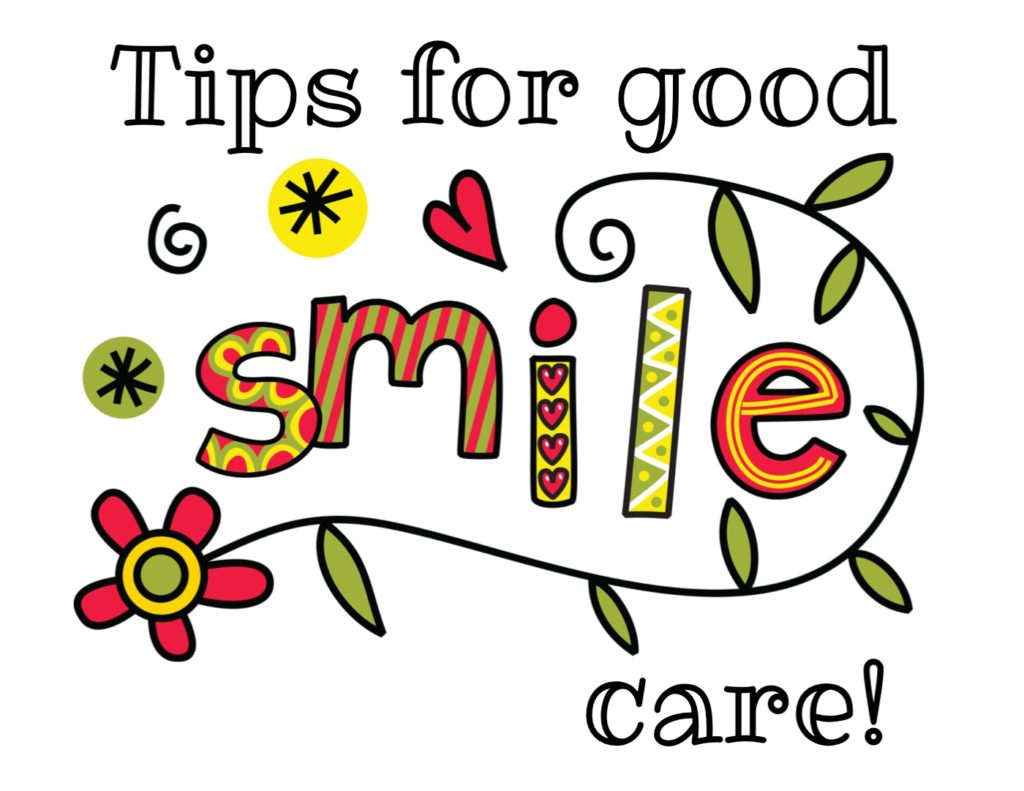
A healthy smile is achieved by using a variety of methods to help create and maintain the appearance and integrity of those pearly whites!
◊ Knowledge is power:
Jake was always a “cause and effect” kind of kid…he also loved learning how the various functions of the body were interrelated in his physiology and anatomy labs while doing his undergraduate studies, so it’s apropos that he would give me a brief overview of what dental decay is exactly!
Tooth decay, also known as dental caries, results from the action of bacteria that live in plague, which is a sticky, white film formed by a protein in saliva and sugary substances in the mouth. Tooth decay takes place when the acid from plague bacteria and sugar attach to a vulnerable tooth surface that is not given proper care.
Did you know that tooth decay has become such a critical problem, that according to the American Dental Association, it is second in prevalence, after the common cold only, of health issues that affect our overall well-being.
◊ An ounce of prevention:
I suspect that if we had unwanted bacteria growing in any other part of our body and were told that we could prevent it (or at the very least, slow growth down) by brushing the area twice a day, along with regular check-ups by our doctor, we wouldn’t even hesitate to do it! As a nurse, I’m always aware that it’s easier and less expensive to prevent health problems than treat them later on down the road. Being mindful of our bodies, including taking time for good oral hygiene, is key to maintaining a healthy lifestyle. Like any other daily routine that promotes wellness, a little tender loving care for our smiles is a crucial component. I like the four simple strategies to prevent tooth decay and preserve healthy teeth that Jake outlined.
1. The best way to prevent tooth decay is obviously to brush our teeth at least twice a day, preferably after every meal and floss daily. Effective brushing cleans the outer tooth grooves and spaces between the teeth as well as the tongue. Flossing once a day also helps prevent gum disease, known as gingivitis, by removing food and plaque at and below the gum line, as well as between the teeth. We should visit our dentist every six months for a thorough oral exam and professional cleaning.
Using an electric toothbrush will certainly amp up our oral care and a water pick is a great choice if we have a hard time flossing or have deep pockets along our gum line, but good old-fashioned brushing and flossing are always the “go-to” care options.
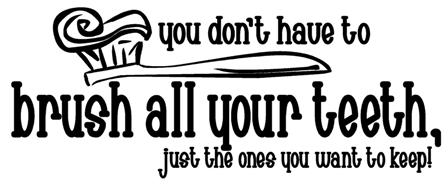
Like most dentists, Jake suggests that we brush our teeth in a circular motion with a soft/medium bristle toothbrush for at least two minutes to allow time for the fluoride in the toothpaste to infiltrate completely into the tooth enamel. We can make it fun by humming a favorite song or brushing during an advertisement segment of a TV show we’re watching. Only use fluoride with someone who can rinse and spit. Babies can’t spit and often just swallow what’s put into their mouths, and that can cause their stomachs to become upset and may lead to fluoride spots forming on developing tooth buds. (Jake likes a toothpaste called MI paste. You can read about it here.)
2. The use of products containing fluoride and calcium phosphate helps to make your tooth enamel become more resilient to demineralization caused by food and bacteria in plaque. Toothpastes, mouthwashes, vitamin supplements and fluoridated public drinking water are all possible sources of fluoride. Put in simple terms, fluoride chemically binds with a natural mineral (hydroxyapatite) in our tooth enamel and helps strengthen them so they can better withstand decay and erosion. Calcium phosphate helps to remineralize the lost calcium in weakened teeth.
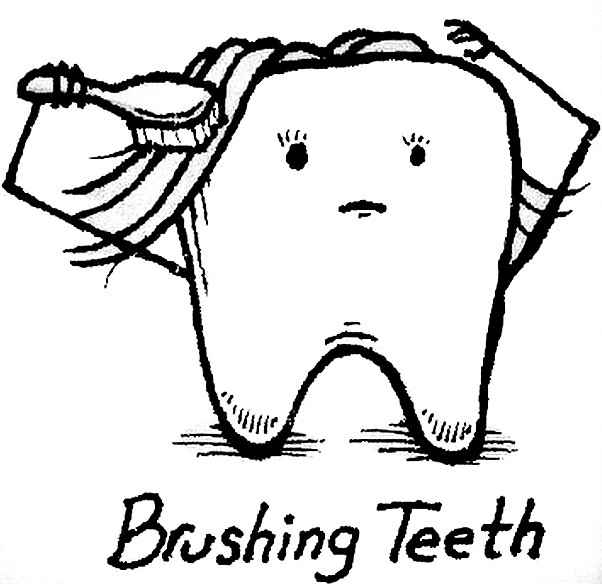
“Wake up, put on your prettiest smile and love today!” Daily Dental Humor
Speaking of fluoride, the debate about the addition of fluoride into public water is always ongoing…but nearly all public health, medical and dental organizations record a significant reduction in dental disease when fluoride is properly added (0.7 mg of fluoride per liter of water) to community water. Because of its contribution to the large decline in cavities in the United States since 1960, the CDC (Center for Disease Control and Prevention) named water fluoridation one of the 10 great public achievements of the 20th century!
3. While fluoride, along with thorough brushing and flossing, proves to be most beneficial on the smooth surfaces of teeth, sealants should be considered to help protect the irregular chewing surfaces. A sealant is a clear, flowable resin that is painted on the grooves of the back molars that quickly bonds into the depressions of a tooth, protecting it against dental caries and plaque. Sealants cost less than fillings and can last up to 10 years. It is usually recommended that sealants be applied to premolars and molars of children and teenagers between the ages of 7 and 14 within the first few years after eruption.
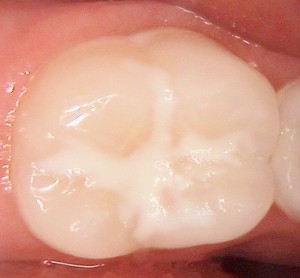
(Sealant via World Dental Clinic)
Sealants often reduce the risk of tooth decay by as much as 80% in molars. I had sealants applied to my children’s teeth when they were young, and even now as adults, they have had very few cavities.
4. Eating a nutritious diet, not only helps us maintain a healthy weight, it’s integral in preventing tooth decay. It goes without saying that a variety of foods from each food group, including whole grains, fruits, vegetables, protein and low-fat dairy products, with a limited amount of refined sugars and processed carbohydrates is best when it comes to maintaining good oral health; when we eat is an important factor to consider as well, since foods eaten with a meal cause less harm to teeth than snacking throughout the day, since more saliva is released during a meal–and saliva helps wash foods from the mouth and lessens the effects of acids that cause tooth decay. Most dental care providers also agree that babies not be put to bed with anything in their bottle except water to prevent early onset tooth decay. A healthy lifestyle simply require us to be aware of our habits and establish a better routine when necessary.
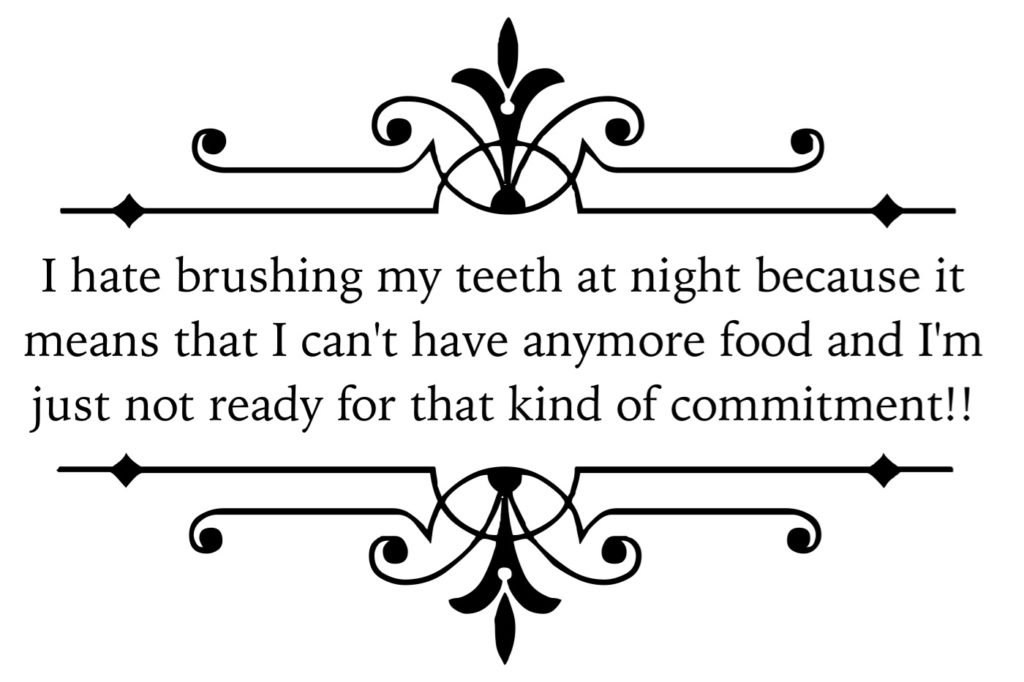
I know what you’re thinking…easier said than done–right? I like the motto my father lived by, “Moderation in all things!” It’s worth taking the extra effort though, if we can feel good and have more time and money to enjoy ourselves rather than being sick and having to pay extra in medical and dental costs.
◊ A good investment:
Did you know that the condition of our teeth and gums can often offer clues to other more serious systemic problems regarding our general health, including cardiovascular disease, diabetes, sinus infections and arthritis, to name a few. Because of these potential links, it is important that we tell our dentist’s if we’re taking any new medications or have had any major changes in our overall well-being. It’s been said that if our eyes are the window to our soul, our mouths are the window to our bodies. As you can see, giving our smiles a little TLC is a good investment that always proves to have huge dividends!

When I asked Jake if there was a treatment plan for my sweet tooth…he just laughed and said, “Yes…..self control!” Ugh!! He also gave me a few suggestions to help make a visit to the dentist more enjoyable. Always visit with your dentist and be informed about the procedures that are recommended. If treatment requires a shot, (anesthesia) try taking a deep breath and keeping your eyes opened and fixed on a focal point. Know that it will be over in a few seconds, then the numbing sets in. Communicate with your dental team. If you are feeling anything uncomfortable, raise a hand and let them know. Perhaps more medicine needs to be administered, a bite prop adjusted or more suction provided. Ask to see the tooth before and after the procedure–often seeing the improvement makes any discomfort experienced seem more worthwhile!
I’m so blessed to be surrounded by lovely people in my life who always make me smile…sometimes even when I don’t feel like it!
One last thing, since Monday is Veteran’s Day, I want to express how blessed and thankful I feel for all those who have served and those who still work hard to preserve our freedoms in this wonderful land of America!

Jake obtained his professional degree with a military scholarship and has served as a dentist for the army for the past 4 years. He and his cute family recently moved to Augusta, Georgia, where he will study prosthodontics.
I’m curious…how do you make going to the dentist a good experience? Any dental “tricks of the trade” that you swear by to keep your smile healthy?
–All the best, Mary
